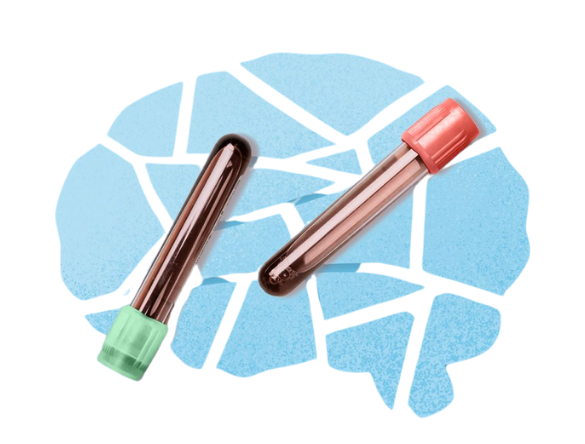
Alzheimer’s disease (AD) is the most common form of dementia, affecting over 6.9 million individuals aged 65 and older in the United States and around 50 million individuals worldwide. A defining hallmark of AD is the accumulation of beta-amyloid and tau proteins in the brain, leading to memory loss, impaired concentration, and drastic changes in mood and behavior. Both proteins are important in maintaining the stability and function of neural connections. Yet, when both exceed normal levels, they are found to either trigger an immune response or cause existing neurons to disassemble. While further details of this disease are not fully understood, such as the exact causes that lead to protein buildup, possible comorbid risk factors include age, genetics, and environmental factors, such as brain injuries, exposure to pollution, and diet. As AD currently has no cure, treatment strategies focus on symptom management through medication and lifestyle changes.
AD is commonly diagnosed through a combination of tests such as neurological exams, lab assessments, and imaging. The neurological exam screens for functions such as mental acuity, coordination, and sensory ability, while blood tests can identify abnormalities relating to dementia-like symptoms. Certain hallmarks of AD, including aggregates of beta-amyloid proteins and tau proteins, are visible with certain imaging techniques. For example, magnetic resonance imaging (MRI) can help directly visualize parts of the brain that may have shrunk due to neuronal loss, while a positron emission tomography (PET) scan can visualize areas with high protein activity. Similarly, the collection of cerebrospinal fluid (CSF), a fluid that surrounds the brain and spinal cord, through a spinal tap allows researchers to evaluate circulating biomarkers of AD. Current research is focused on enhancing the diagnostic capabilities of healthcare professionals, enabling them to diagnose patients and start managing symptoms earlier, in hopes of slowing disease progression. Experts at leading medical centers have been focused on developing inexpensive blood tests, making diagnosis more accessible for those at risk.
On May 16, 2025, the US Food and Drug Administration (FDA) confirmed such efforts by approving the first blood test to diagnose Alzheimer’s disease, called the Lumipulse test. The Lumipulse test was credited to Fujirebio Diagnostics, a renowned biotechnology company, and measures the pTau217/β-Amyloid 1-42 Plasma Ratio. Researchers found that their method of measuring tau protein and beta-amyloid protein levels provided a reliable and less invasive method when it came to diagnosing AD. The results of the clinical trial testing the efficacy of the Lumipulse test were supported by brain scans and spinal taps, thus confirming that measuring protein levels from the blood alone was an accurate predictor of AD. However, like all diagnostic tests, it is still subject to inaccuracies. A small percentage of participants in the study had false positives or false negatives, which could potentially be a limiting factor in widespread use of the Lumipulse test.
Nevertheless, as research advances, the Lumipulse blood test has the potential to become part of routine medical evaluations. Given that beta-amyloid can slowly accumulate in the brain for more than 20 years before symptoms appear, this blood test could help detect AD early on. As of now, the test is only approved for individuals who are above 55 years old or those who are experiencing symptoms. With that being said, the test could become more widespread as healthcare professionals weigh the costs and benefits of use. The Lumipulse test is also expected to be covered by insurance in the future. Alzheimer’s disease has the potential to take away a lot from people’s lives, but by working together as a community, advocating for people in need, and spreading accurate medical information, it is possible to support individuals with their diagnosis and ensure they are receiving the care they deserve.
Resources:
- 2024 Alzheimer’s disease facts and figures | PMC
- Comprehensive Review on Alzheimer’s Disease: Causes and Treatment | PMC
- The Role of Tau in Alzheimer’s Disease and Related Disorders | PMC
- Amyloid beta: structure, biology and structure-based therapeutic development | Acta Pharmacologica Sinica
- Medical Tests for Diagnosing Alzheimer’s & Dementia | alz.org
- FDA Clears First Blood Test Used in Diagnosing Alzheimer’s Disease
- What to Know About the New Blood Test for Alzheimer’s
